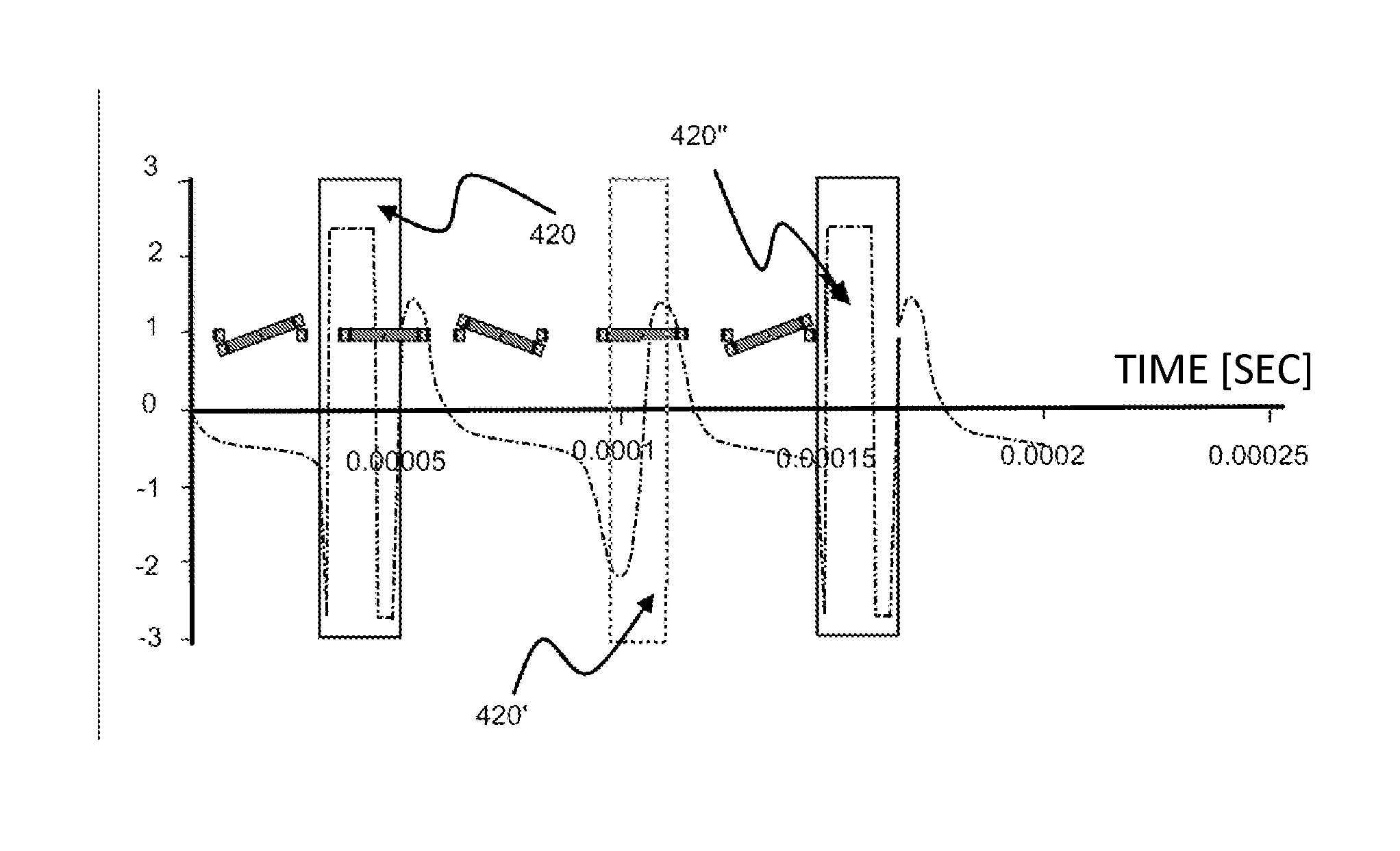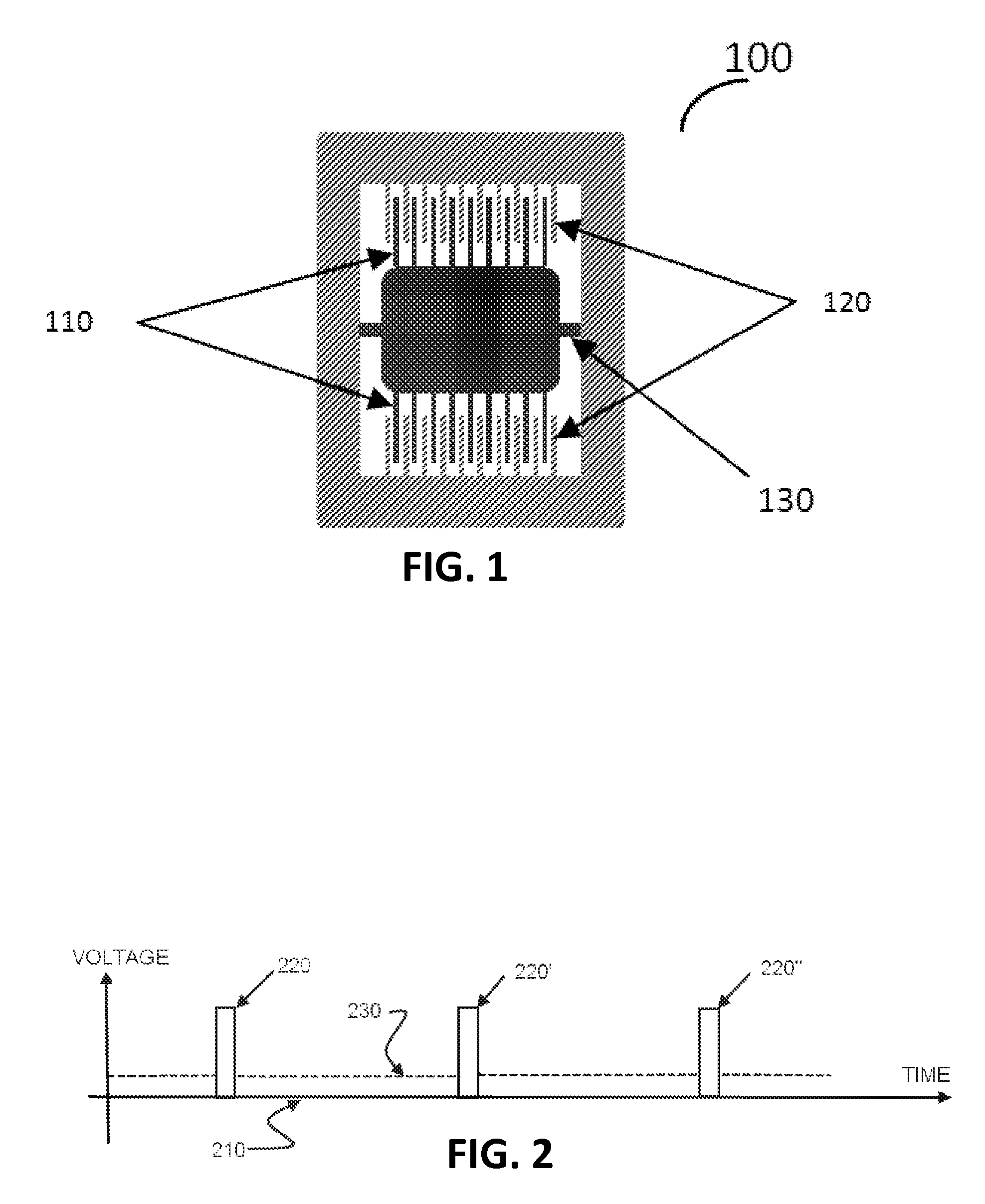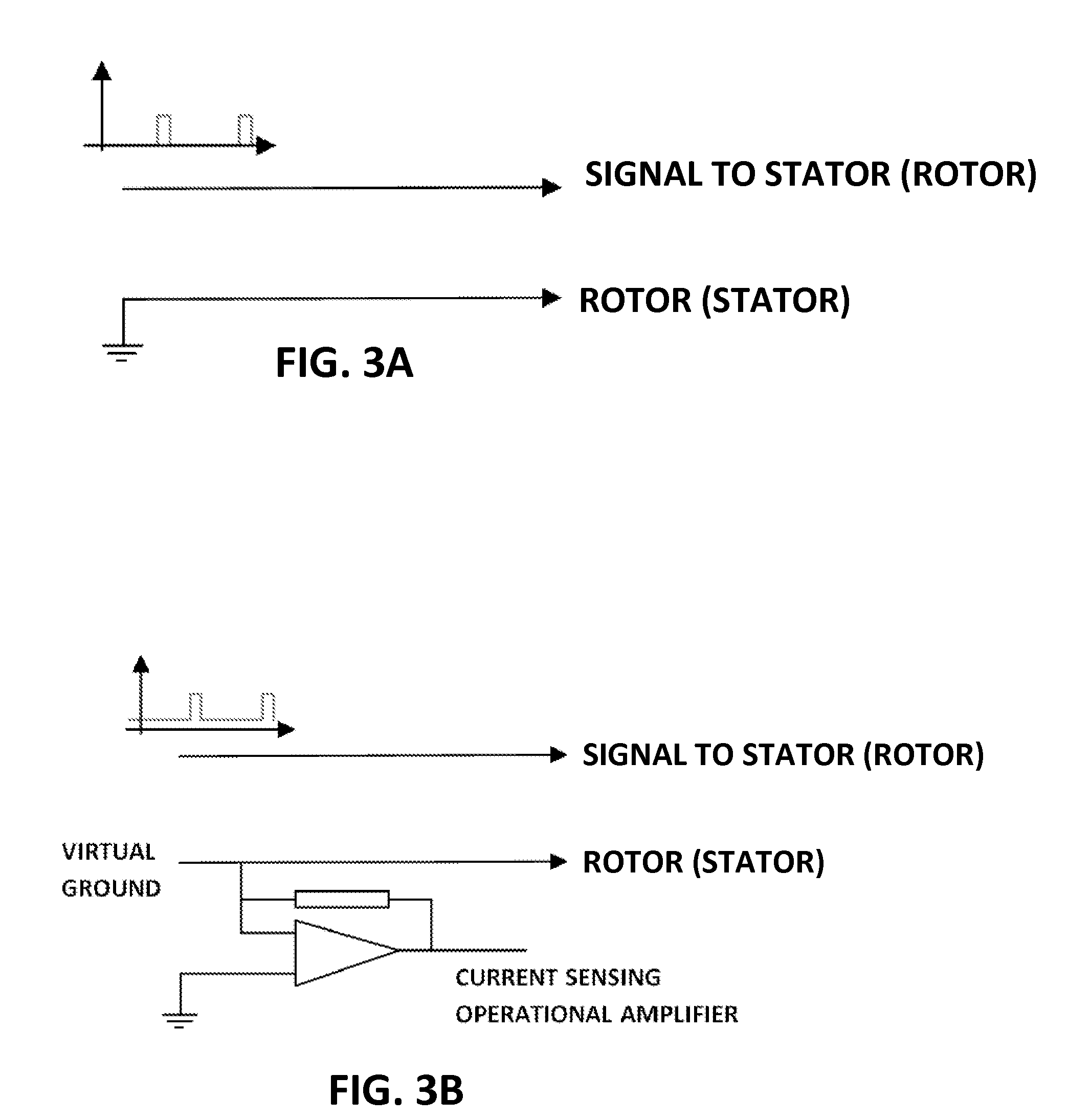Method and device for monitoring movement of mirrors in a MEMS device
a technology of mems and mirror, applied in the direction of optics, instruments, optics, etc., can solve the problems of insufficient knowledge of actuation voltage timing to enable the determination of accurate position, inability to measure this parameter in order to overcome the problem at hand, and inability to accurately monitor the position of mirrors
- Summary
- Abstract
- Description
- Claims
- Application Information
AI Technical Summary
Benefits of technology
Problems solved by technology
Method used
Image
Examples
Embodiment Construction
[0067]A better understanding of the present invention may be obtained when the following non-limiting detailed examples are considered in conjunction with the accompanying drawings.
[0068]In order to better understand the various aspects of the present invention, let us consider the following: Equation (1) is derived simply by using the basic definitions of the parameters used:
[0069]I(t)=ⅆQⅆt=ⅆ(CV)ⅆt=CⅆVⅆt+VⅆCⅆt(1)
Where:
[0070]I—is the current;
[0071]Q—is the electric charge;
[0072]C—is the capacitance; and
[0073]V—is the voltage.
[0074]In the classic case, the capacitance would remain constant over time, therefore the above equation may be reduced to the following:
[0075]I=CⅆVⅆt(2)
[0076]However, according to a preferred embodiment of the present invention, we are interested in the capacitance change when fixed in time voltage is applied to the system. In this case, equation (1) may be reduced to the following:
[0077]I=ⅆ(CV)ⅆt=VⅆCⅆt(3)
[0078]In this case the current will indicate the ch...
PUM
 Login to View More
Login to View More Abstract
Description
Claims
Application Information
 Login to View More
Login to View More - R&D
- Intellectual Property
- Life Sciences
- Materials
- Tech Scout
- Unparalleled Data Quality
- Higher Quality Content
- 60% Fewer Hallucinations
Browse by: Latest US Patents, China's latest patents, Technical Efficacy Thesaurus, Application Domain, Technology Topic, Popular Technical Reports.
© 2025 PatSnap. All rights reserved.Legal|Privacy policy|Modern Slavery Act Transparency Statement|Sitemap|About US| Contact US: help@patsnap.com



